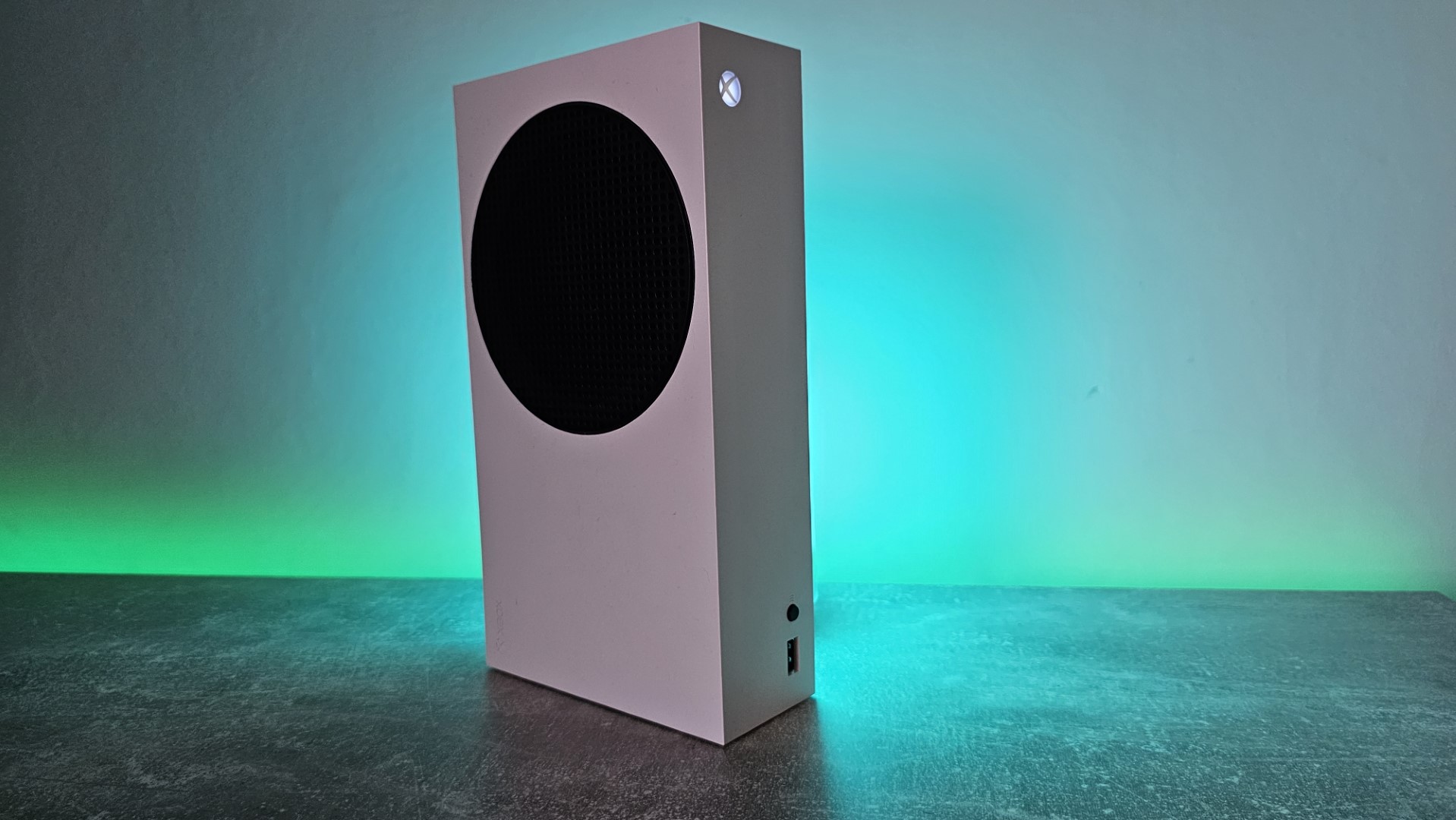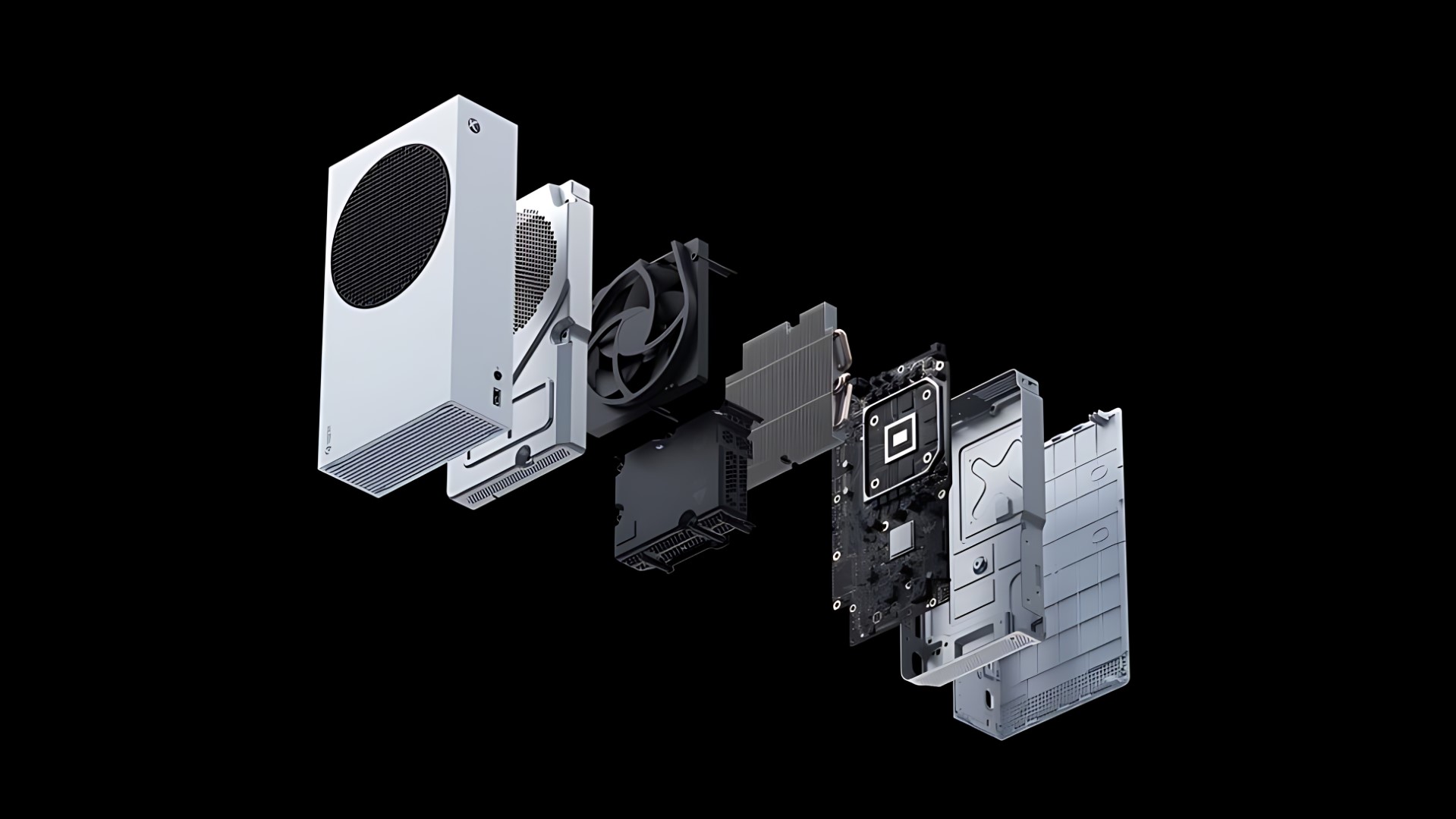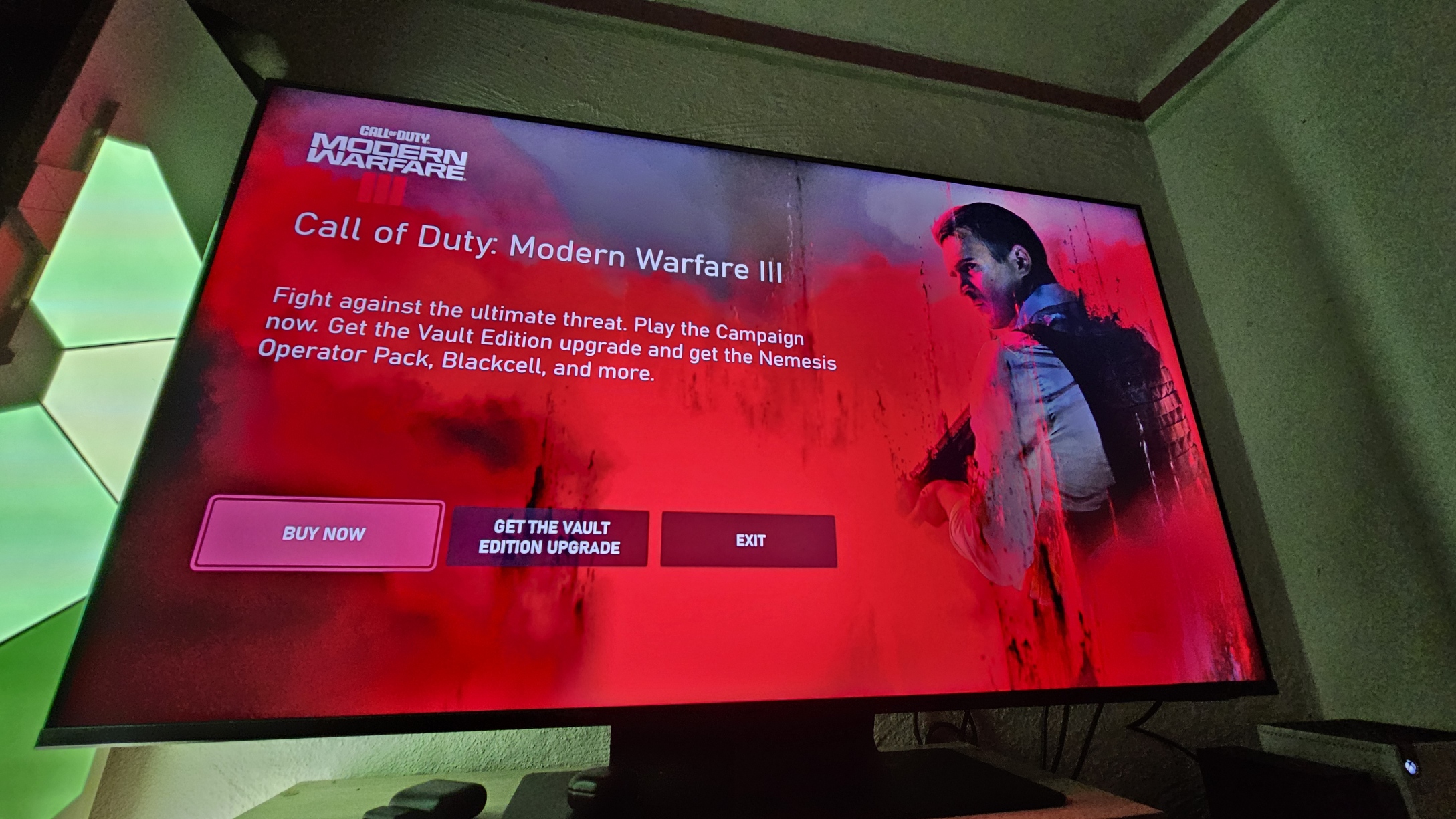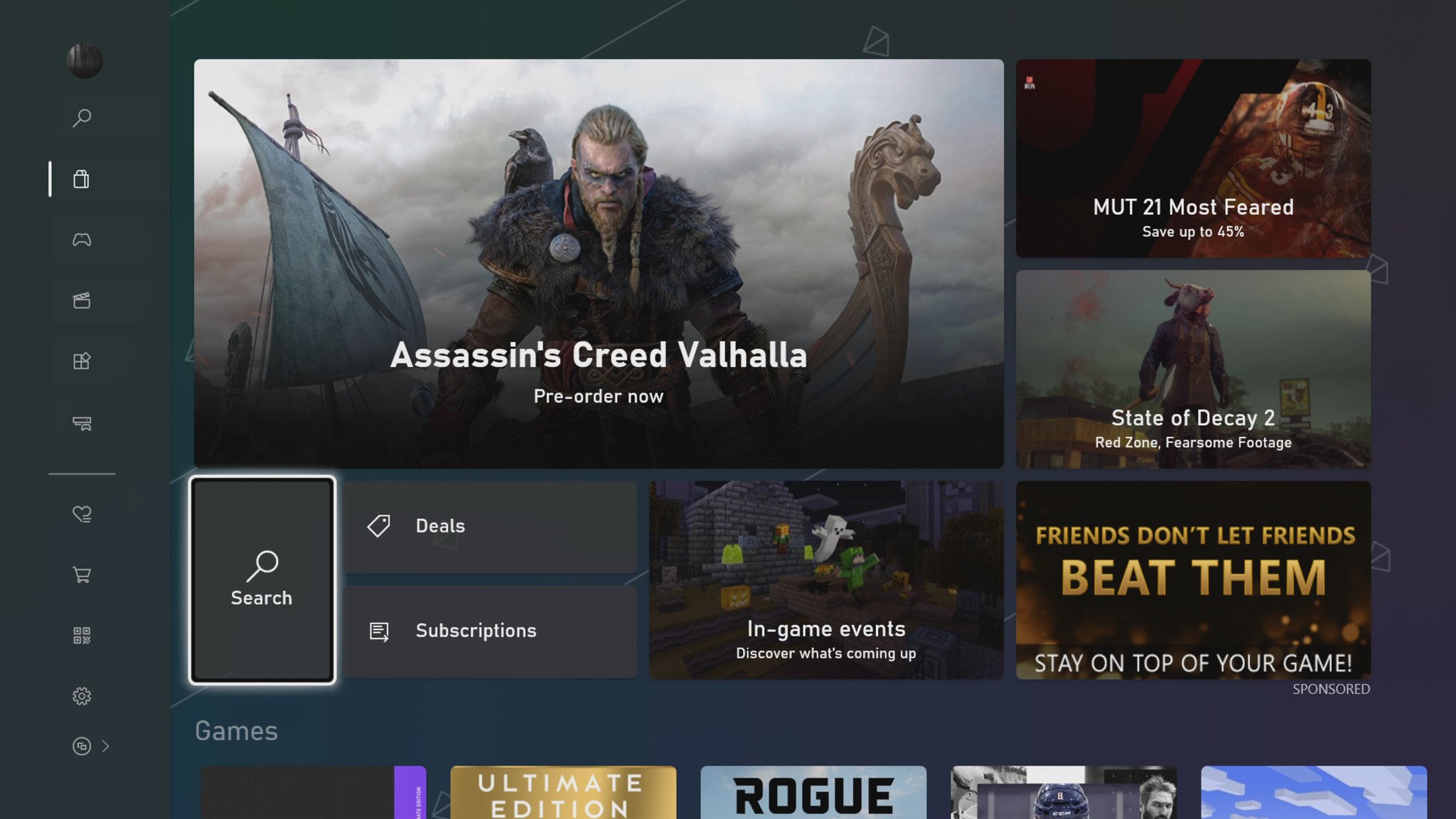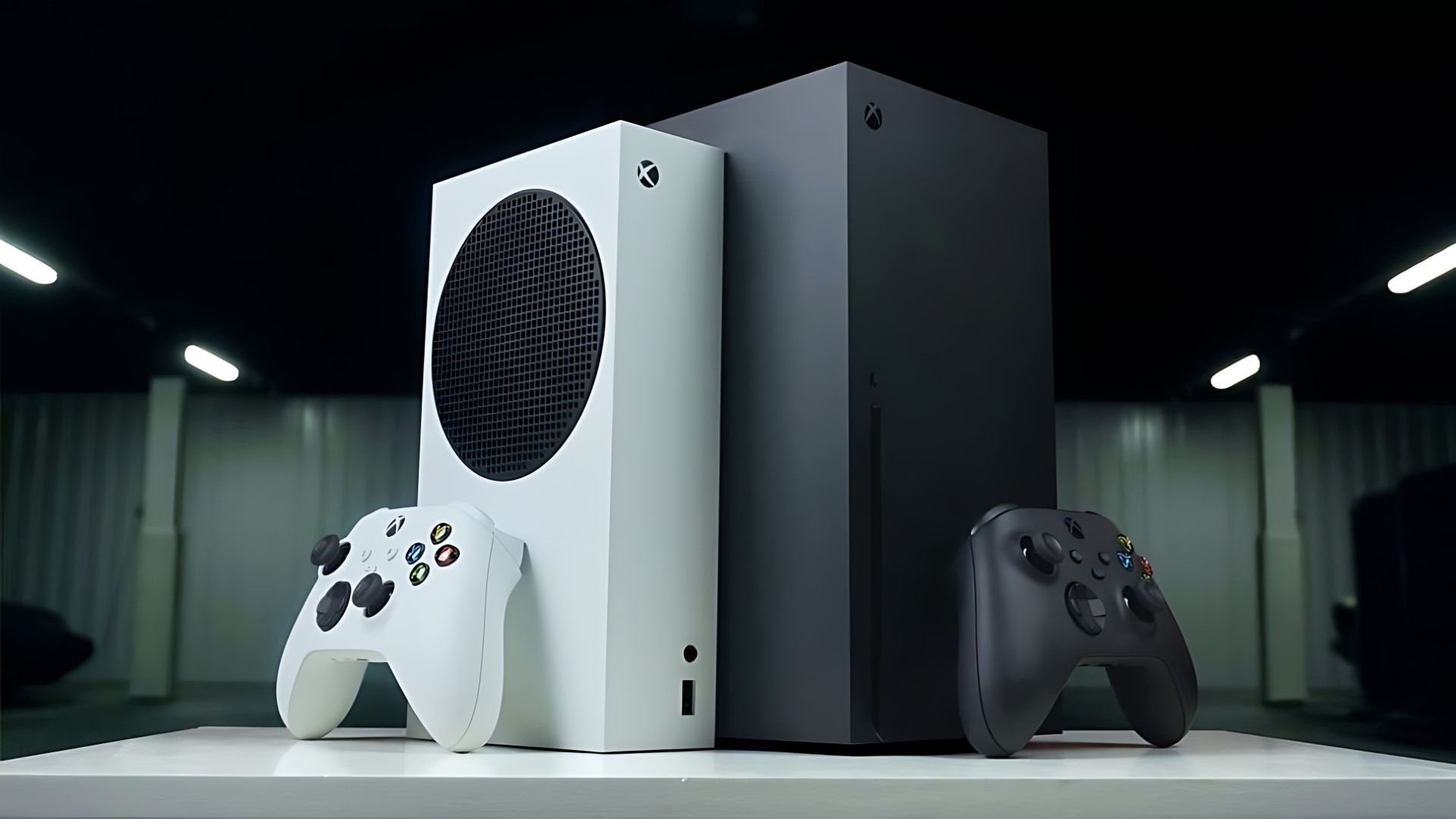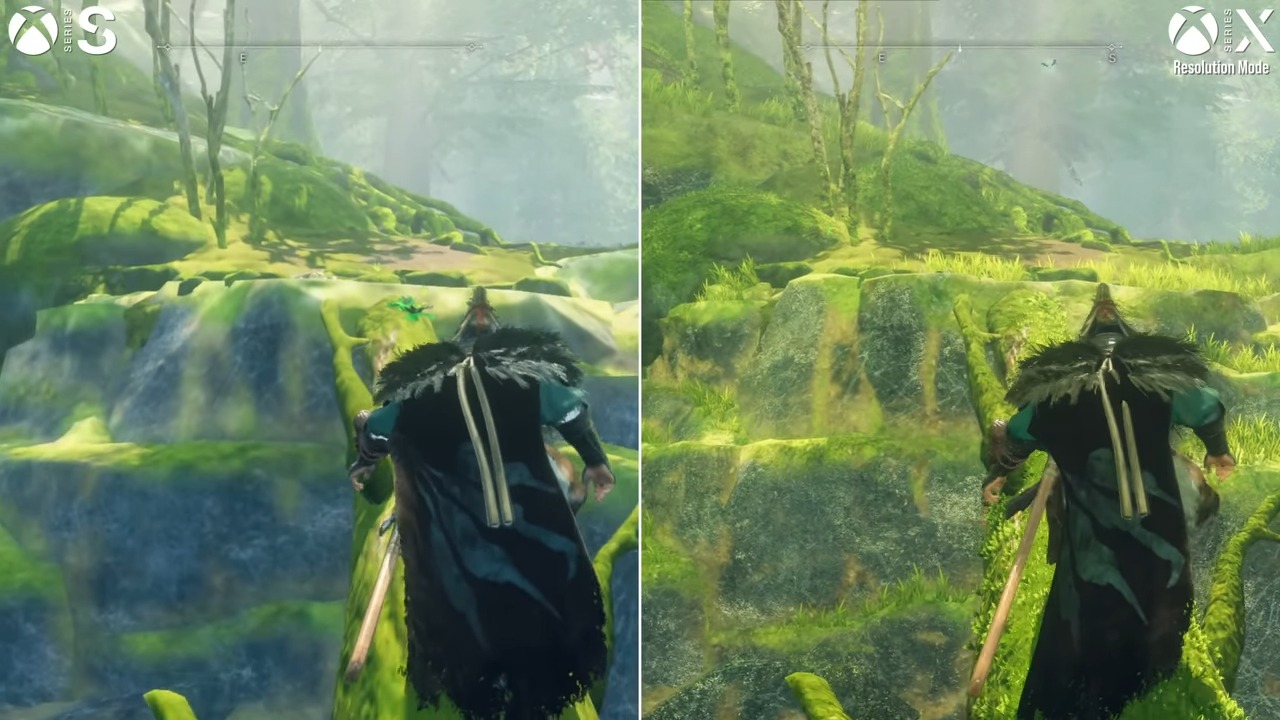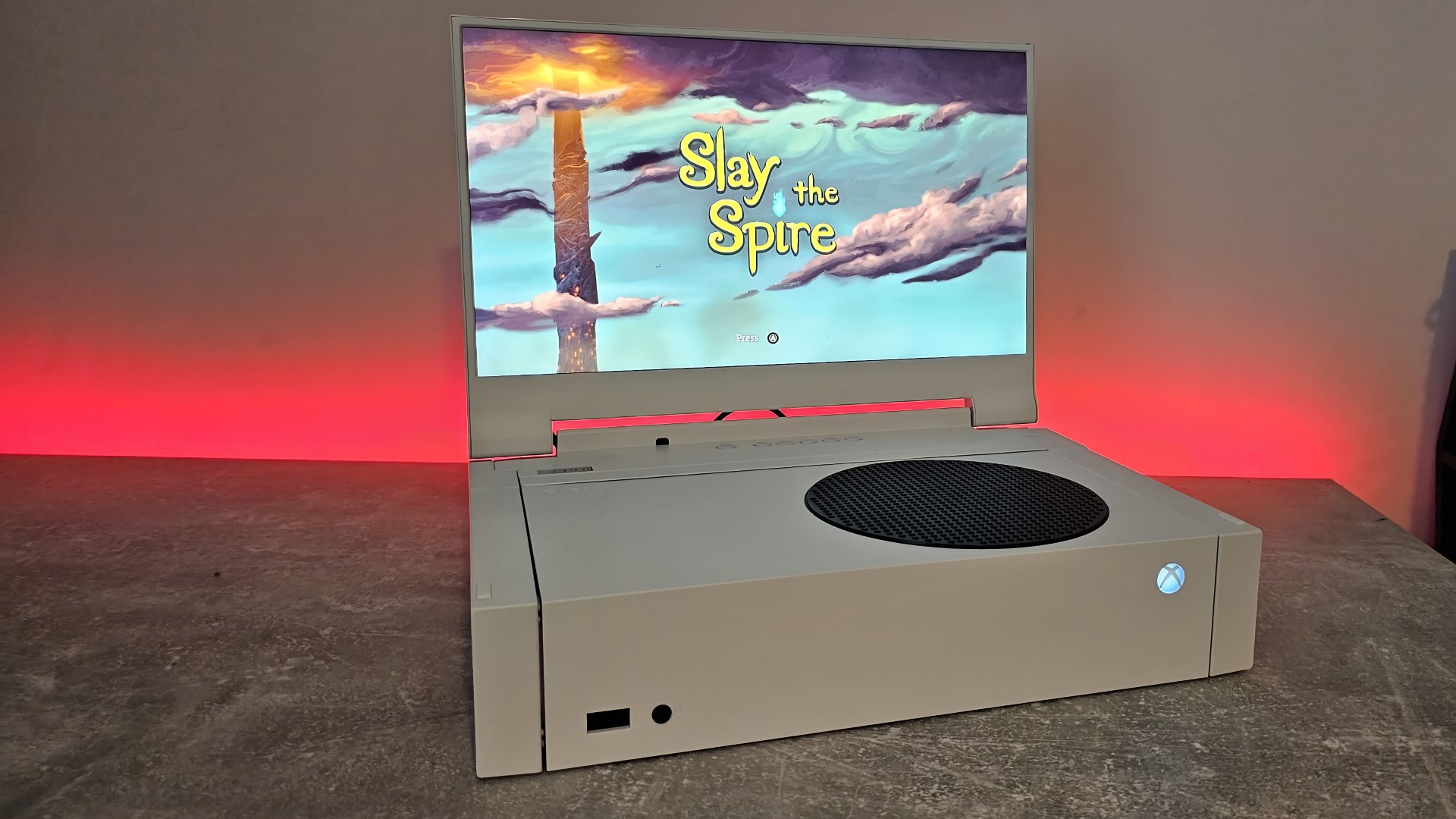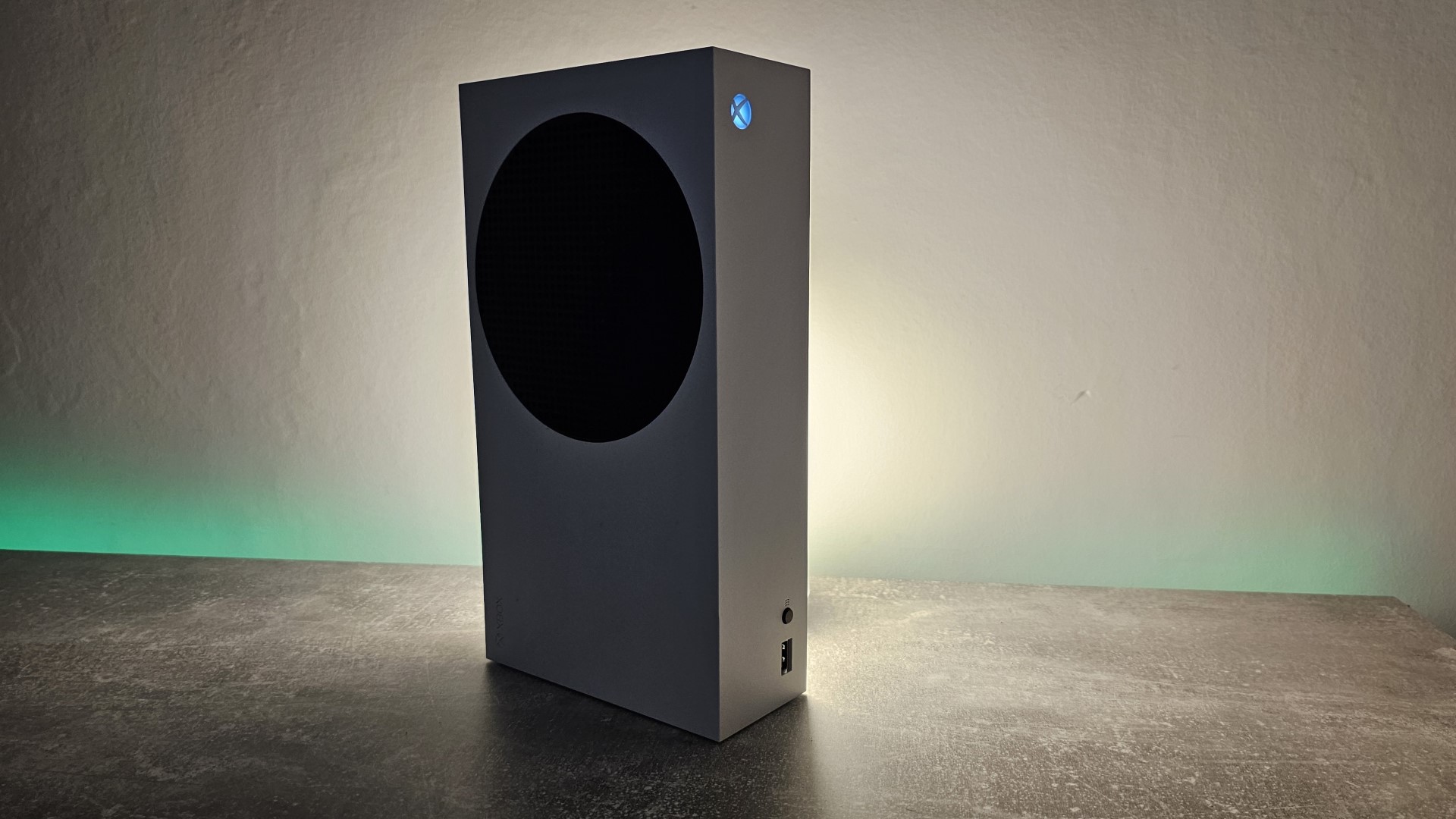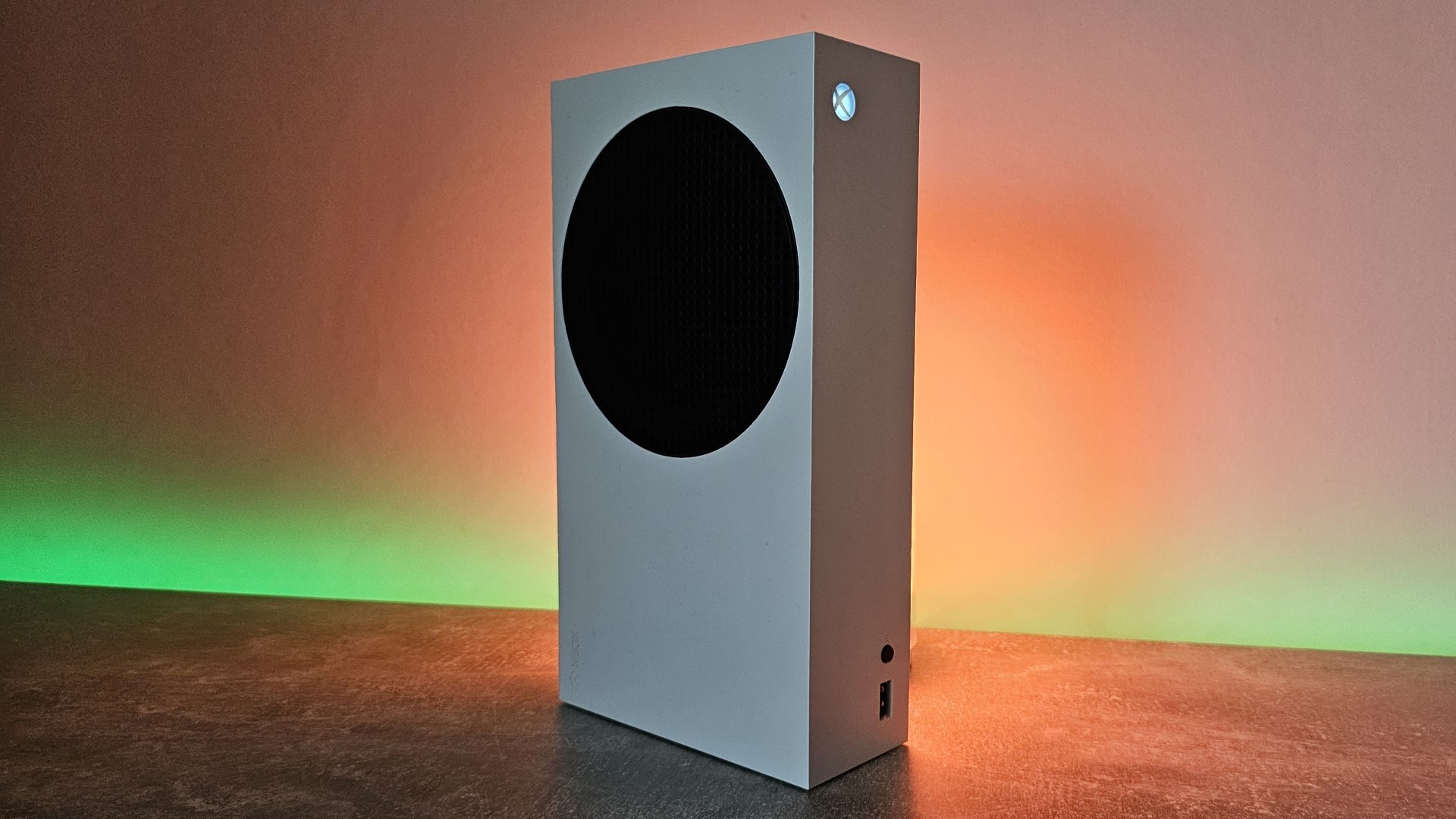Windows Central Verdict
The Xbox Series S remains a solid entry point into Microsoft's gaming ecosystem, delivering 1080p HD performance across most titles with frame rates often on par with its more powerful counterparts. Its compact design, speedy navigation, and access to Xbox Game Pass make it appealing for casual gamers or existing Xbox One S users seeking a modest upgrade. However, the recent price increase diminishes its value for money, making it harder to recommend for budget-conscious players when compared for example to the PS5 Digital. While it still offers a capable gaming experience, the rising cost and inherent compromises make it less of a standout in 2025.
Pros
- +
Great design with silent cooling.
- +
Quick Resume multiple games and boosted loading speeds
- +
Impressive FPS capabilities across many titles enhanced for new-gen consoles.
- +
+Xbox Game Pass and future first-party investment are beginning to show fruit
Cons
- -
512GB SSD fills up rapidly.
- -
A handful of titles have visual issues that can't be ignored.
Why you can trust Windows Central
The Xbox Series S has long been celebrated as the affordable, consumer-friendly console in Microsoft’s lineup, but 2025 has brought about some seismic shifts in the gaming market. What was once a budget-friendly entry into the current Xbox ecosystem is now brushing up against the price of a PlayStation 5 Digital Edition, raising questions about its value proposition for gamers in today’s economy.
Back in 2020, Microsoft introduced the Xbox Series X and Xbox Series S gaming consoles, employing a distinctive dual-pronged strategy for its next-generation lineup, separated by differences in power and price. This bold approach aimed to cater to two different audiences, offering cutting-edge performance for the hardcore gaming audience while providing an affordable, accessible alternative for the more casual consumers.
I've been using the Xbox Series S since launch, and I’ve had the benefit of comparing the console with the Xbox Series X we have in the household. For years, the price and portability of the Series S outweighed its compromises, making it my go-to recommendation for families and casual gamers. However, the economic realities of 2025 have fundamentally altered its position in the market.
May 3, 2025: Update to reflect new price of Xbox consoles, meaning this is no longer the budget buy it was at launch.
Xbox Series S: Price & availability
Price: $379.99 Standard 512GB | $429.99 for 1TB Edition
CPU: 8-core AMD Zen 2 CPU @ 3.6GHz
GPU: AMD RDNA 2 GPU with 20 CUs @ 1.565GHz
GPU Power: 4 TFLOPS
RAM: 10GB GDDR6 RAM (8GB at 224 GB/s, 2GB at 56 GB/s)
Storage: Custom NVMe SSD with up to 512GB capacity, or 1TB for an extra $60
Display out: HDMI
Disc drive: Digital only
Resolution: up to 1440p resolution
Frame Rate: up to 120 FPS
The Xbox Series S is still widely available for purchase purchase directly from Microsoft, or from several other retailers both online or bricks and mortar such as Walmart, Best Buy, Target, and even Dell.
From May 2025, its pricing has shifted dramatically. The Xbox Series S 512GB has been bumped from $299.99 to $379.99, and the 1TB model from $349.99 to $429.99.
The original appeal of the Series S was its entry-level price point, previously as low as $249.99 during sales. Today’s $379.99 MSRP puts it uncomfortably close to the PlayStation 5 Digital Edition, which offers more robust hardware at $449.99, or at time of writing the Astro Bot edition sells for $399.99. The Xbox Series S still includes access to the expansive Xbox Game Pass library, and bundles with Xbox Game Pass Ultimate add value, but the price increase diminishes its reputation as the budget-friendly console of choice.
Xbox Series S: Design & hardware
The Xbox Series S is like the cool, little sibling in the gaming world. Unlike its powerhouse brother, the Xbox Series X, which is all about raw performance, the Series S focuses on simplicity and affordability, without sacrificing too much on the gaming experience.
From the get-go, the console catches your eye with its sleek, modern design – a white body with a mysterious black circle on the side. Sure, some early memes compared it to doorbells and toasters, but that black circle? It's not just for show; it's a vent keeping the console cool and quiet. It may look a bit quirky, but it's also a standout feature that sets it apart from its bulkier counterparts. I was confused by the design choice with the black grill initially, however, any other color would be unsightly given the heat it gives out and the potential for discoloration. Microsoft are very much in on the joke now, being as they've launched a real life Xbox Series S toaster.
Overall, it's light, thin, and unlike the clunky consoles of the past, it fits right in with the aesthetic of modern living spaces. Plus, it's a breeze to move around; you can even slip it into your suitcase for gaming on the go during family holidays — something I have done a lot if where we are going doing have a smart TV.
It’s so light that you can hold it in one hand with ease
The Xbox Series S is also a great console for entertainment, as it’s much smaller than the Xbox Series X and takes up less space. You can see the difference when you put them next to each other. Microsoft made the Xbox Series S as light as possible, only keeping the most important parts. It’s so light that you can hold it in one hand with ease, weighing only 4.25 pounds (1.9kg).
What I love most about the Series S is its practicality. It's not a space hog like the Series X or the PlayStation 5. You can plop it down vertically or horizontally, thanks to its rubber feet that keep it from sliding. Just be cautious if you decide to go vertical — it's a bit wobbly.
All the latest news, reviews, and guides for Windows and Xbox diehards.
Now, let's dive into the technical nitty-gritty. The Series S doesn't boast the raw power of its big sibling, but it's no slouch. Microsoft cleverly balances performance and affordability, making it an intriguing console. It might not scream 4K, but it's a perfectly capable machine for those on a budget, especially if you're still rocking an HD TV.
Numerous notable improvements seen in the Xbox Series X are also evident in this console, preserving the core elements while making compromises in other areas to achieve a more affordable price. A brief look at the specifications of the Xbox Series S reveals the true worth derived from these essential shared components. Concealed beneath its modest appearance is a tailored CPU, a responsive SSD, and a GPU that, while not setting records, effectively gets the job done.
It goes beyond flashy graphics; it's about seamlessly integrating technology for players.
Despite a few minor drawbacks, the Xbox Series S proves to be a competent gaming device, providing a reliable gaming experience tailored to those with budget or space constraints. For me, it goes beyond flashy graphics; it's about seamlessly integrating technology for players. This approach is evident in the Series S, streamlining day-to-day experiences by reducing load times, ensuring fluid menu navigation, and improving overall system interaction.
Despite its basic, no-frills appearance, the Series S has a lot in common with the more powerful Series X. It uses AMD's Zen 2 CPU and an RDNA 2 graphics-capable GPU, thanks to a close partnership between Microsoft and AMD. This collaboration opens up new gaming opportunities.
From speedy menus to reduced load times, Xbox Series S feels like a premium system.
The heart of the Series S is its custom CPU, operating at 3.6 GHz on a 7nm process. While slightly slower than its big sibling, it eliminates a crucial bottleneck from previous hardware generations. The GPU, part of AMD's Navi series, clocks in at 4 TFLOPS, offering a console that targets resolutions between 1080p and 1440p — a departure from the 4K standard set by the Xbox Series X. The 10GB GDDR6 RAM, is considerably less than the Series X (16GB) and has contributed to some difficulties since launch with developers trying to maintain parity between games on the Xbox platform.
"The much lower amount of memory and the split memory banks with drastically slower speeds will prove to be problematic," said Billy Khan, lead programmer at id Software in 2020, and ultimately he was proved to be right as most recent issues with Baldur's Gate 3 have shown. It's not all bad news, though, as we'll discuss later in performance.
The standout hero in this tech tale, however, is the NVMe SSD. A game-changer with its high-speed PCIe 4.0 drive. Identical in performance to the Series X, it delivers read and write speeds of 2.4GB/s, revolutionizing load times and overall system responsiveness. It's a joy to experience, making the pace of previous Xbox One consoles appear positively sluggish in comparison.
Loading Speed Test | Xbox Series X/S (SSD) | Xbox One X (HDD) |
|---|---|---|
Monster Hunter: World | 4.7 seconds | 35.6 seconds |
Gears 5 | 8.9 seconds | 47 seconds |
State of Decay 2 | 13.1 seconds | 1 minute 3.4 seconds |
Fortnite | 10.2 seconds | 24.3 seconds |
Rocket League | 4 seconds | 5 seconds |
However, the SSD's Achilles' heel is its 512GB capacity, with only 364GB usable out of the box. Managing storage becomes a regular chore for all-digital gamers, especially with titles like Call of Duty: Modern Warfare 3 demanding significant space. To expand, you'll need the proprietary expansion card from Seagate, matching the internal SSD's performance but carrying a hefty price tag. It's a costly but effective solution for those craving more storage without sacrificing speed, and it has come down slightly in price this year, with an MSRP of $149.99 for the 1TB card. The price drop is no doubt in part due to competitors like WD_Black throwing alternatives into the ring.
512GB simply isn't enough storage for any console nowadays, and you will fill up your system with 5 games or fewer easily, which defeats the budget buy aspect as extra storage is essential. There's no absolute need to purchase one of these expensive cards though, and my solution is a cheaper external drive such as the Seagate Expansion 2TB from our best Xbox hard drives list, which I move my games to and from as and when I need them. Not perfect, but it's cheap.
Despite these storage shortcomings, the Series S impresses with quiet cooling and aesthetics. Priced at $299, it replaces the Xbox One S, offering a budget-friendly alternative that outperforms consoles like the Nintendo Switch in terms of raw power.
While the Series S is a substantial upgrade over its predecessors, it lags behind the Series X and PlayStation 5 in the race for current-gen supremacy. Defining the Series S proves challenging; it shares current-gen hallmarks but sits in a distinctly different category. It outpaces the previous generation but currently stands as a side-grade to the Xbox One X. With advancements like FPS Boost, it even challenges the Xbox One X in frame rates. For those hungry for the full 4K next-gen experience, however, the Xbox Series X remains the primary contender.
Xbox Series S: Operating System & Features
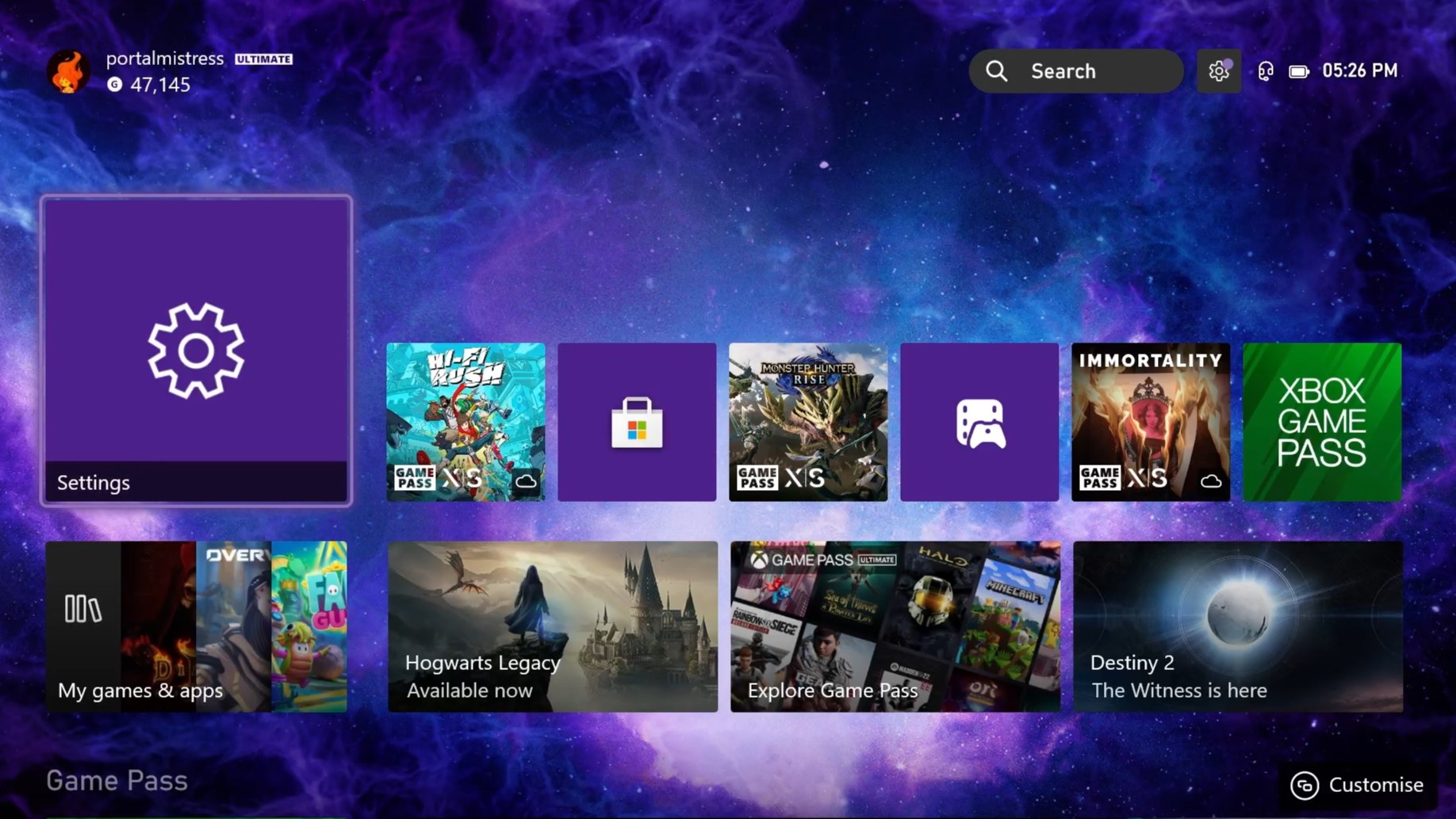
The old Xbox Series S|X dashboard was familiar but made dynamic backgrounds redundant
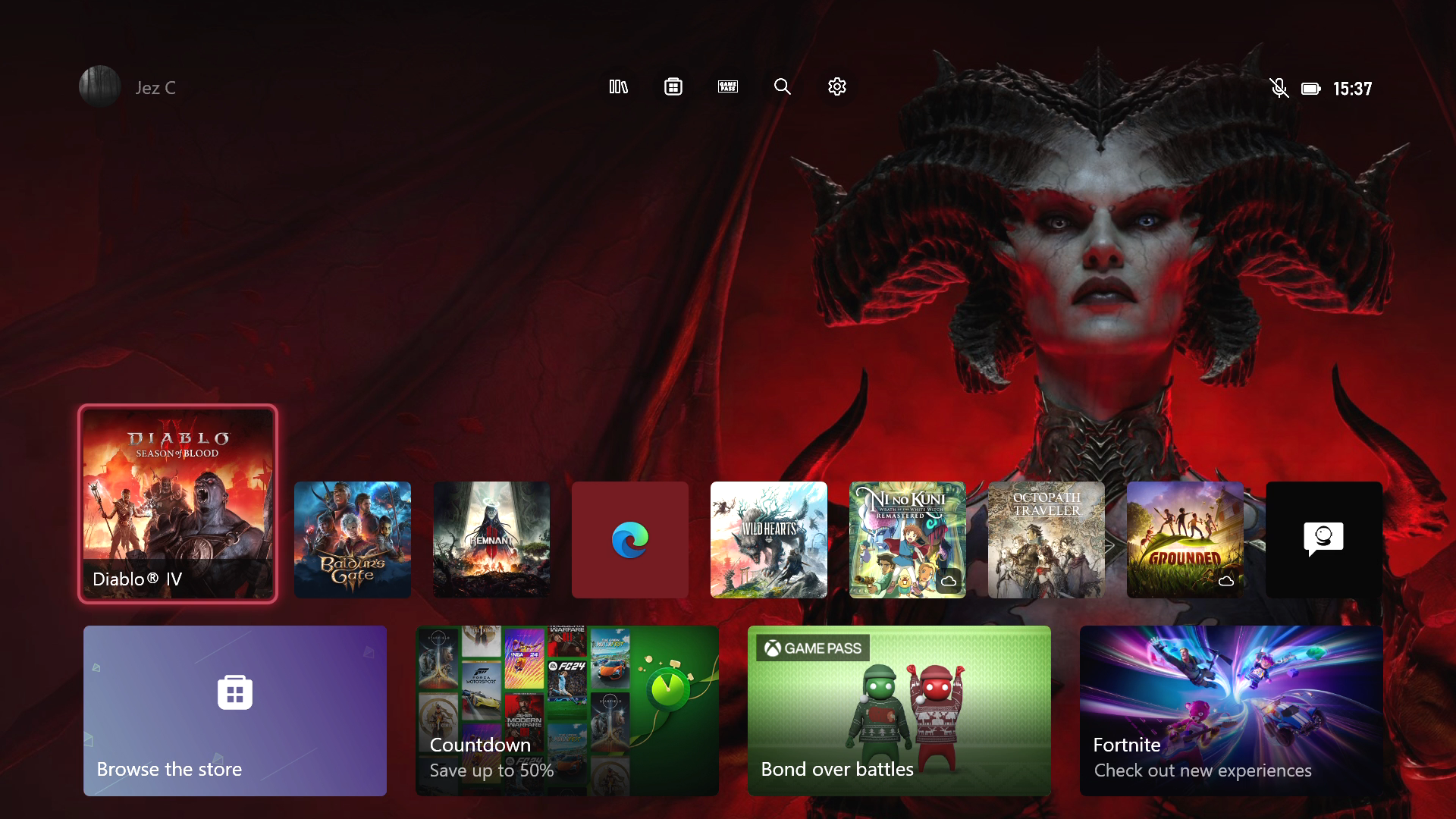
The new dashboard makes more of a feature of your personalized themes.
The Xbox Series S not only impresses with its hardware but also carries a robust operating system and features that elevate the overall gaming experience. Building upon the mature Xbox One ecosystem, the Series S offers a seamless transition for returning Xbox owners.
The familiar operating system shared with its predecessor brings a breath of fresh air compared to the Xbox One's early days. The dashboard itself has gone through a significant revamp recently making dynamic backgrounds and personal themes more front and center with a more minimalistic and clean approach to icons and navigation, though the system still receives some criticism for its heavy advertising of particular titles, as demonstrated recently with aggressive pop-ups for Call of Duty: Modern Warfare 3. Controversial, they may be, but something I can dismiss with a button press doesn't really concern me personally.
The Series S introduces a range of features that capitalize on current-generation technologies, enhancing speed and responsiveness. The SSD plays a crucial role in this, powering features like Quick Resume. This multitasking marvel allows the system to save the current game state in memory, enabling quick reboots without the full opening sequences.
Quick Resume supports multiple games simultaneously, a significant improvement over its predecessor, and even retains saved states after powering down and unplugging the console. Understandably, it won't work well with live service titles like Diablo 4, and you'll still need to reload games like this when powering your console back on. While not confirmed, Quick Resume has been blamed recently for save issues in games like Baldur's Gate 3, and players are repeatedly asking for the option to turn it off entirely. So while handy, it's not suited to everyone in it's current form.
The HDMI 2.1 feature set, though primarily benefiting the Series X, brings enhancements for Series S owners too. Auto Low Latency (ALLM) and Variable Refresh Rate (VRR) improve gaming experiences, automatically shifting your TV to Game Mode and addressing screen tearing.
However, the Series S does have some omissions on the media front. Microsoft has shifted its focus from the console being an "all-in-one" entertainment hub, removing features like HDMI pass-through for cable boxes and SPDIF optical audio output. The absence of a disc drive also emphasizes online streaming over 4K Blu-ray playback. While the all-digital approach enhances streaming options, the lack of a Blu-ray drive is noticeable, particularly for Microsoft's Movies & TV service.
The console compensates for these hardware omissions with a diverse lineup of streaming apps available through the Microsoft Store. Popular services like Netflix, Disney+, Hulu, and Apple TV are readily accessible, offering a rich streaming experience. The Series S supports 4K HDR playback for most apps, despite its primary focus on HD gaming.
Audiovisual enthusiasts will appreciate the console's capabilities, supporting both HDR10 and Dolby Vision visuals, along with Dolby Atmos and DTS:X spatial technologies. Third-party speakers like Amazon Alexa and Google Assistant integrate seamlessly for basic controls, catering to those nostalgic for the Kinect era.
Xbox Series S: Performance
As we revisit the performance of the Xbox Series S in 2024, it's evident that this budget-friendly console has carved a niche for itself in the gaming market. While its big brother, the Xbox Series X, boasts the title of "world's most powerful console," the Series S caters to a different audience, offering an affordable entry into next-gen gaming. However, as the gaming landscape has evolved, some performance challenges have come to light, affecting the experience with newer titles.
The console's mix of old and new specifications continues to deliver mixed results depending on the games you play. The Xbox Series S remains a solid choice for casual or budget-conscious players, offering a basic box that can handle the latest games. Loading times are consistently reduced thanks to the SSD, a feature that makes transitioning from older consoles a noticeable improvement, but I have known it struggle with a handful of titles.
The first I noticed was Wild Hearts, which launched back in March 2023. The game struggled to load textures, had distractingly low resolution and only ran at 30FPS compared to the 60FPS on the Xbox Series X. At times, the awful weather effects and delays loading in assets meant I found the game unplayable.
Despite its potential to hit 1440p QHD resolution at 60 FPS, with optional 120 FPS support, the Xbox Series S has settled into being a reliable 1080p gaming machine. Recent titles, like Wild Hearts above, have faced struggles on the Series S, showcasing limitations in performance.
Additionally, the infamous "parity clause" has affected releases, with games like Baldur's Gate 3 arriving late due to compatibility issues and an inability to match the Series X's capabilities. It does display a clear difference between the consoles and how much optimizing for both does mean extra work and time for the developers. Extra work and time some do not wish to spend.
While the Series S falls back on Xbox One S versions for non-enhanced games, some titles benefit from FPS Boost, providing improved performance. The list of games with this feature includes titles like Alan Wake, Assassin's Creed, Fable and Fallout, but we haven't had any meaningful additions to the list since it's launch in 2021 as Microsoft announced they were winding down the backwards compatibility program. With the recent Activision Blizzard acquisition, could this present new possibilities for addition to the library of backwards compatible and FPS boosted games? I dream a dream of Skylanders in 60FPS without the need for purchasing figurines.
First party titles like Forza Horizon 5 have consistently been the best games to really showcase the Xbox Series S true capabilities, rendering at 1080p and 60fps and utilizing ray tracing in Forza Vista mode. Thought to enjoy consistent ray tracing in actual gameplay you'll need to again default to the Xbox Series X as the S doesn't implement it in as many games.
Still, the Xbox Series S has successfully managed to position itseld as a hybrid console, falling between performance expected from Xbox One S and Xbox One X at 1080p, but with additional considerations for next-generation technologies like ray tracing.
The console still offers a way to experience blockbuster titles, though we’ve yet to see a truly generation-defining release to entice casual audiences to upgrade from the Xbox One S. Editor Jez Corden pondered this conundrum recently following the announcement of Grand Theft Auto 6.. The launch of GTA 6 potentially could be a first in the generation opportunity for Xbox to market the console to those left of the previous generation who have yet to upgrade, being as it's being developed for the current gen only.
Even years after its launch, the Series S retains its appeal as the cheapest way to play upcoming major titles, particularly as the industry transitions fully to current-gen development.
Combined with its compatibility with Xbox Cloud Gaming and its reduced entry barriers, the Xbox Series S remains a solid option for those seeking an accessible path into the Xbox ecosystem, specifically. Though its rising price dampens its once-unquestionable budget appeal, and if you aren't likely to take advantage of Xbox Game Pass and purchase only a few games a year, perhaps the PS5 Digital would be more appealing.
Has the Xbox Series S 'held back' the generation?
There are rightful concerns about how the hardware discussed here holds up and what that means for the broader generation as the years have passed since the Xbox Series S launched. While I don't see Xbox Series S as holding back the flagships, we've already seen concern from developers at several big-name studios, and concerns realized in the development of games such as Baldur's Gate 3, which notoriously struggled in coming to the platform. It's clear this console isn't just the Xbox Series X at a lower resolution, but the extent of those limitations has only become clear long after our first review in 2020.
Some games at launch, such as Chivalry 2 were only capable of 30FPS on the Xbox Series S, as opposed to the 60FPS enjoyed by Series X owners. It took two months before an update was pushed enabling 60 FPS, indicating more development work was needed to get the game up to scratch. This optimization work was pulled off without sacrificing performance or visuals, no mean feat but extra work and time nonetheless.
Whilst some naysayers criticize the Series S for allegedly being more difficult to work with, the improvements made for these games go on to benefit all platforms equally, with some games like Chivalry 2 running smoother now on both PC and console versions. Could the Xbox Series S be the hero of the generation, rather than the villain it's been relentlessly memed as?
In another, arguably more high-profile scenario, Xbox was left waiting months after the launch of Baldur's Gate 3 for the game to arrive on the platform. With Xbox Series S split-screen co-op woes directly blamed for the delay. Microsoft worked diligently with Larian to get the game to Xbox, and the extra development work resulted in a significant reduction in VRAM usage that benefitted PlayStation and PC too. Following situations like these, our sources at Microsoft have told us that in 2023 much more money was invested into tools to aid developers in bringing their games to the Xbox Series S in the best quality possible, so we may well see the fruits of this labor in years to come.
Xbox Series S: Should you buy?
You should buy the Xbox Series S if ...
✅ You want the lowest entry point into current generation for big titles
Admittedly we are only just starting to see games being developed exclusively for Xbox Series X|S and PS5 alone, but huge titles like Baldur's Gate 3 and Alan Wake 2 now require one of these if you want the console experience, and the Xbox Series S is the cheapest, even with the price increase in 2025.
✅ You want modern conveniences
If you want to benefit from the new user experience of silent cooling, quick resume for your games, boosted loading speeds and FPS boost on backwards compatible titles, the Series S is well worth the upgrade from the One S and X.
✅ You're interested in Xbox first party offerings and the Xbox Game Pass library
Xbox's significant investments in first-party game development are on the just now bringing in substantial returns. In 2025 so far we've had Avowed, South of Midnight, with DOOM: The Dark Ages about to launch. Xbox has teased upcoming games from other studios, such as Compulsion Games' South of Midnight and inXile's Clockwork Revolution. With this promising array of titles, Xbox is poised for a robust and exciting few years of game releases, making the Xbox Series S and Xbox Game Pass a more enticing investment.
You should not buy the Xbox Series S if ...
❌ You already have a One S or X and tend to stick to service games
If your main games are Minecraft, Forza or Call of Duty, you need not worry about those games leaving the previous generation platform anytime soon.
❌ You have a 4K television and want to make the most of it
If you already have a 4K tv that supports FreeSync and HDR10, you may benefit more from purchasing the Xbox Series X for full graphical fidelity.
❌ Digital storage space is important to you
The Xbox Series S being an all-digital console with only 512GB seems to be at odds with itself, and if you're not willing to purchase a separate SSD or external HDD, you may struggle for space. The Xbox Series X supports physical media as well as having a 1TB SSD, or of course you can opt for the 1TB Xbox Series S but personally I think the PlayStation 5 All Digital would be better value for the storage
Even though I have both the Xbox Series X and Series S at home, I find myself using the Xbox Series S the majority of the time. I’m not overly concerned with 4K visuals or ultra-high resolutions; I just want a console that lets me jump into the latest Xbox games wherever it’s most convenient. The Series S’s compact design and portability make it ideal for gaming in any room of the house or even on the go.
For more casual players, the Series S remains a good console, though the recent price increase does complicate its appeal as an entry-level option.
Despite its rising cost, the Xbox Series S remains my preferred console of this generation, proving that powerful, fun gaming can come in small packages.

Jen is a News Writer for Windows Central, focused on all things gaming and Microsoft. Anything slaying monsters with magical weapons will get a thumbs up such as Dark Souls, Dragon Age, Diablo, and Monster Hunter. When not playing games, she'll be watching a horror or trash reality TV show, she hasn't decided which of those categories the Kardashians fit into. You can follow Jen on Twitter @Jenbox360 for more Diablo fangirling and general moaning about British weather.
You must confirm your public display name before commenting
Please logout and then login again, you will then be prompted to enter your display name.



